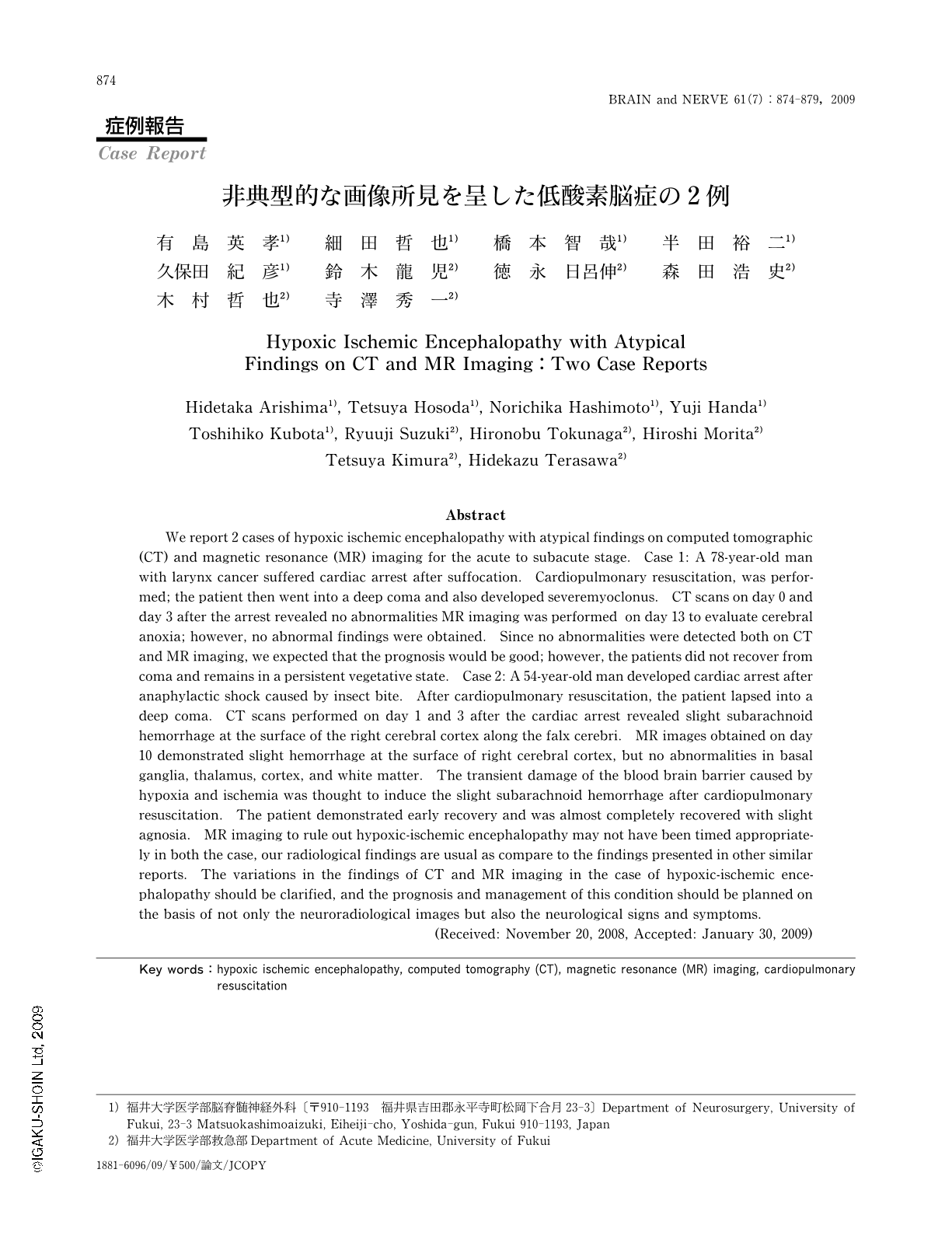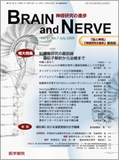Japanese
English
- 有料閲覧
- Abstract 文献概要
- 1ページ目 Look Inside
- 参考文献 Reference
はじめに
心肺停止からの蘇生や窒息が原因で脳血流低下や低酸素状態がもたらす脳全体の障害は,一般的に低酸素脳症または蘇生後脳症と表現され,重症例の画像診断においてCTでは灰白質と白質とのコントラストの消失や脳溝の消失1),MRIでは皮質や視床・基底核といった灰白質の信号の変化や皮質の層状懐死(laminar necrosis)を呈することが知られている2,3)。最近では,MRIの拡散強調画像が脳損傷の評価や予後予測に有用と報告されている4-12)。今回われわれは,急性期から亜急性期のCTおよびMRIで非典型的な画像所見を呈した低酸素脳症の2例を経験したので,若干の考察を加え報告する。
Abstract
We report 2 cases of hypoxic ischemic encephalopathy with atypical findings on computed tomographic (CT) and magnetic resonance (MR) imaging for the acute to subacute stage. Case 1: A 78-year-old man with larynx cancer suffered cardiac arrest after suffocation. Cardiopulmonary resuscitation, was performed; the patient then went into a deep coma and also developed severemyoclonus. CT scans on day 0 and day 3 after the arrest revealed no abnormalities MR imaging was performed on day 13 to evaluate cerebral anoxia; however, no abnormal findings were obtained. Since no abnormalities were detected both on CT and MR imaging, we expected that the prognosis would be good; however, the patients did not recover from coma and remains in a persistent vegetative state. Case 2: A 54-year-old man developed cardiac arrest after anaphylactic shock caused by insect bite. After cardiopulmonary resuscitation, the patient lapsed into a deep coma. CT scans performed on day 1 and 3 after the cardiac arrest revealed slight subarachnoid hemorrhage at the surface of the right cerebral cortex along the falx cerebri. MR images obtained on day 10 demonstrated slight hemorrhage at the surface of right cerebral cortex, but no abnormalities in basal ganglia, thalamus, cortex, and white matter. The transient damage of the blood brain barrier caused by hypoxia and ischemia was thought to induce the slight subarachnoid hemorrhage after cardiopulmonary resuscitation. The patient demonstrated early recovery and was almost completely recovered with slight agnosia. MR imaging to rule out hypoxic-ischemic encephalopathy may not have been timed appropriately in both the case, our radiological findings are usual as compare to the findings presented in other similar reports. The variations in the findings of CT and MR imaging in the case of hypoxic-ischemic encephalopathy should be clarified, and the prognosis and management of this condition should be planned on the basis of not only the neuroradiological images but also the neurological signs and symptoms.
(Received: November 20,2008,Accepted: January 30,2009)

Copyright © 2009, Igaku-Shoin Ltd. All rights reserved.


